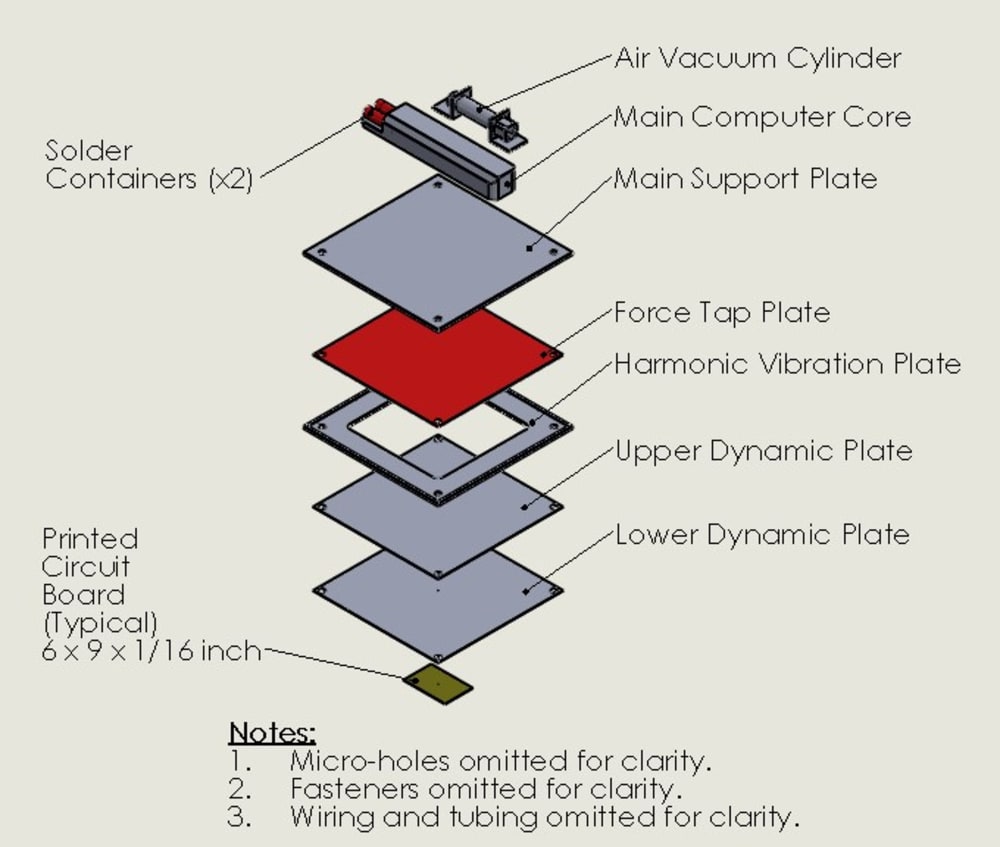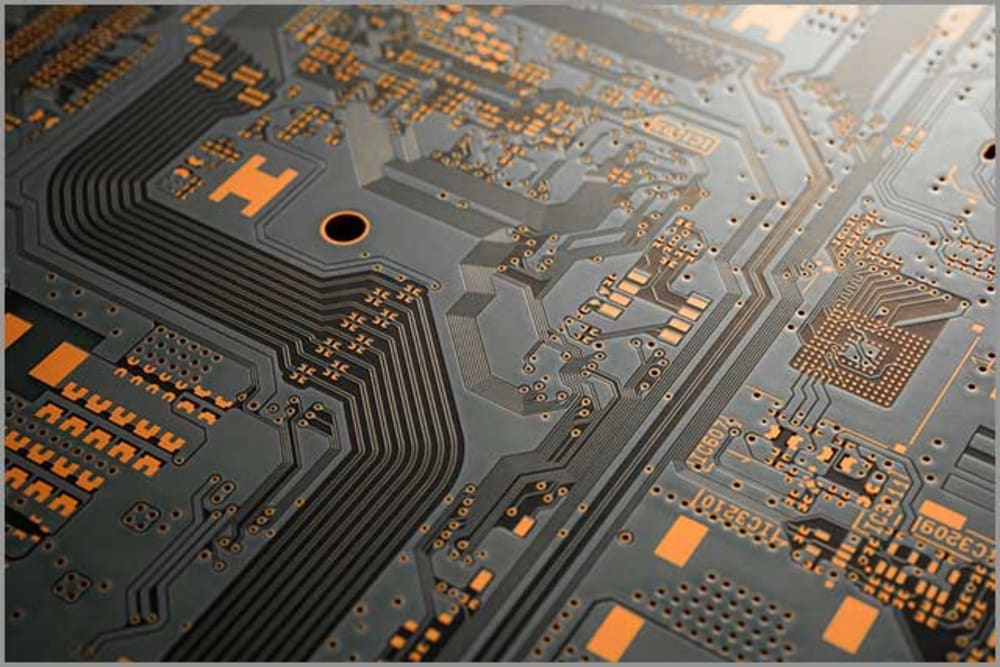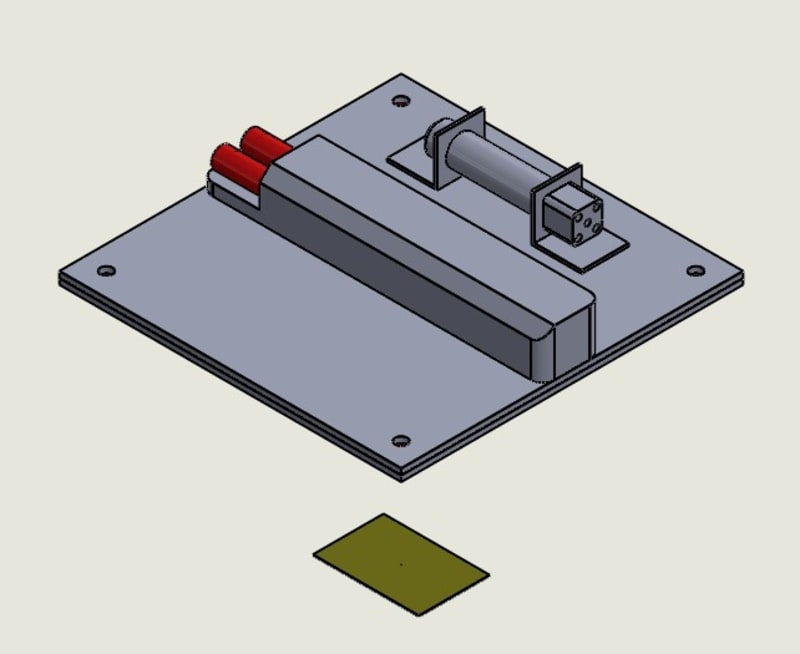
The Universal Solder Stencil (U.S.S.) is a novel enhancement over the current and custom-made solder paste stencil used in the Surface Mount Technology (SMT) electronics manufacturing industry. The USS uses an isometric grid of uniformly shaped micro-holes that allow for the depositing of a precise measure of solder paste onto the metallized surface layers of the printed circuit board. Current solder stencils are custom made for every new PCB design with a unique pattern of metal pads on both the top and bottom surfaces. Many manufacturers and suppliers provide these stencils for their many customers in the USA and around the world. The USS can provide solder paste patterns of every size, shape, location, and thickness imaginable using its dot-matrix method of application; like how an inkjet printer functions, but in a planar form consisting of the micro-hole grid array.
SOLDER PASTE STORAGE: Solder paste of the required type is stored above the USS in its standard, plastic container.
AIR VACUUM CYLINDER & PUMP: The AVC and integral pump provides the suction to distribute the solder paste evenly throughout the dynamic plates.
MAIN COMPUTER CORE: The MCC provides software-controlled functioning of the entire USS device. The solder paste containers are integrated directly into the MCC and regulates the material as needed throughout the system.
MAIN SUPPORT PLATE: The MSP provides the foundation for all the above artifacts as well as an anchor for the plates directly below it.
FORCE TAP PLATE: The FTP provides the micro-impaction necessary to dislodge the solder paste from the lower dynamic plate and unto the printed circuit board.
UPPER DYNAMIC PLATE: The UDP provides the "guillotine" action that separates the solder paste after it enters the micro-holes of the static plate.
HARMONIC VIBRATION ACTUATOR: The upper and lower dynamic plate moves energetically because of its connection to a HVA that surrounds the plate along the periphery of the USS.
LOWER DYNAMIC PLATE: The LDP holds the measure solder paste to be drawn away from the USS and deposited onto the metal pads of the PCB.
The ensuing dots of solder paste can then be accumulated together to form any specific size, shape, location, and thickness as determined by the PCB designer or engineer. On the other hand, new custom stencils must be ordered following the current method, which consequently entails additional costs as well as time-consuming downtime on the production line. The USS does away with this hassle through its computer-controlled micro-hole grid plates and micro-pressure transducers along with a variety of sensors to monitor solder paste print quality and quantity. Additionally, the production of the USS would use existing machining operations, including laser machining, chemical milling, standard CNC machining tools, and custom-made fixturing and tooling. The USS immediately provides SMT users and operators with a lower cost of operation and maintenance, increased speed towards results, and high-quality throughput in its overall production.
-
Awards
-
 2022 Top 100 Entries
2022 Top 100 Entries
Like this entry?
-
About the Entrant
- Name:Mark Lagamayo
- Type of entry:individual
- Software used for this entry:SolidWorks
- Patent status:none








